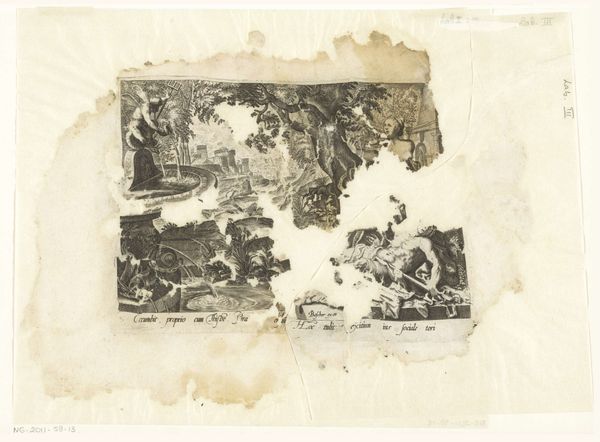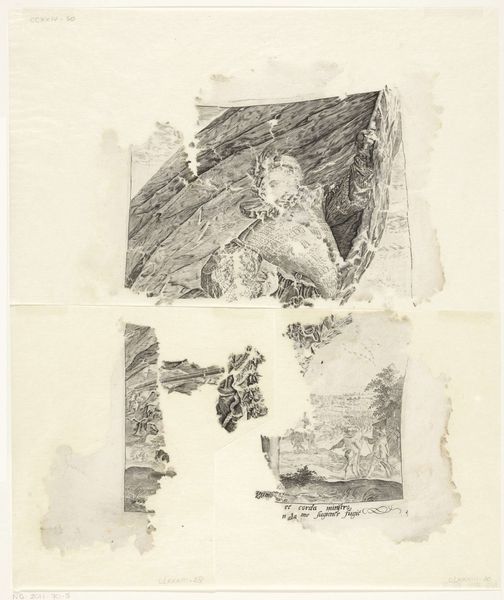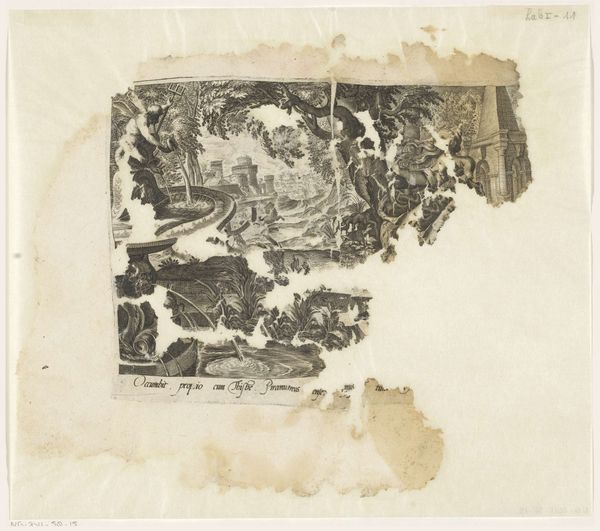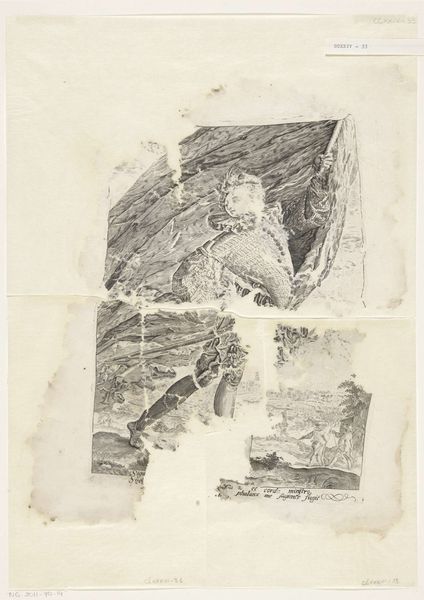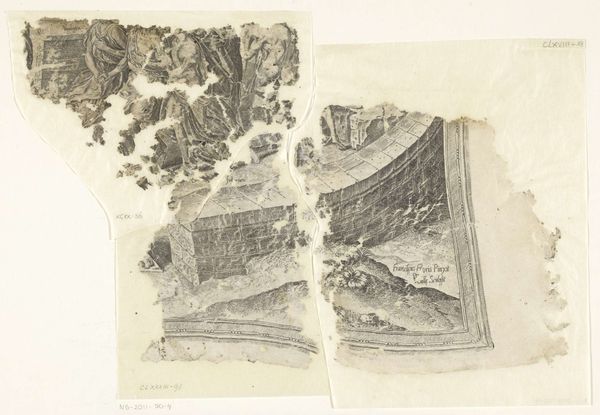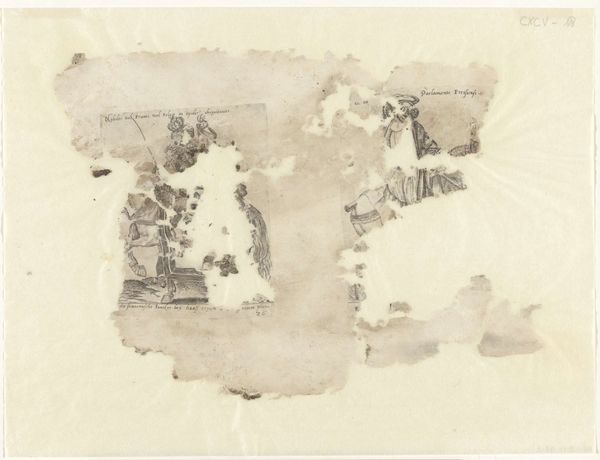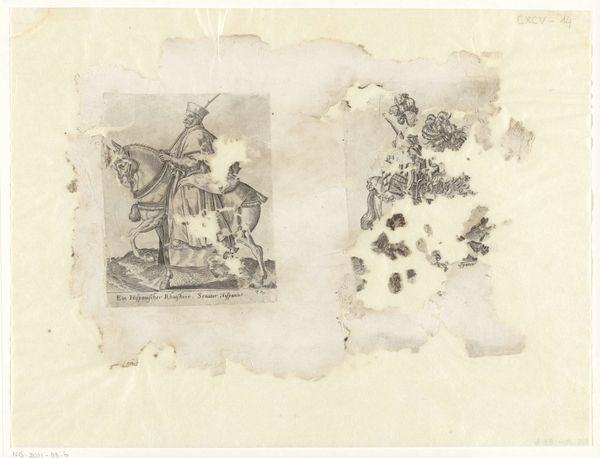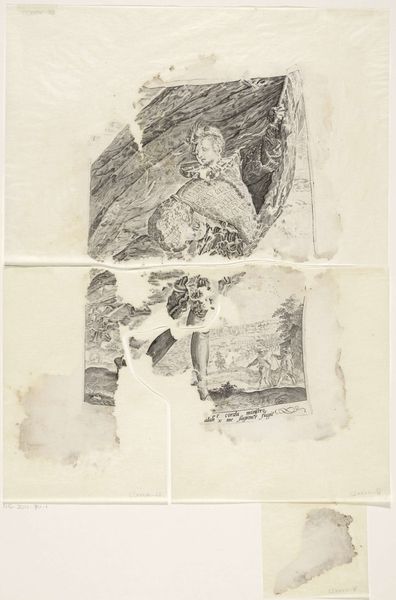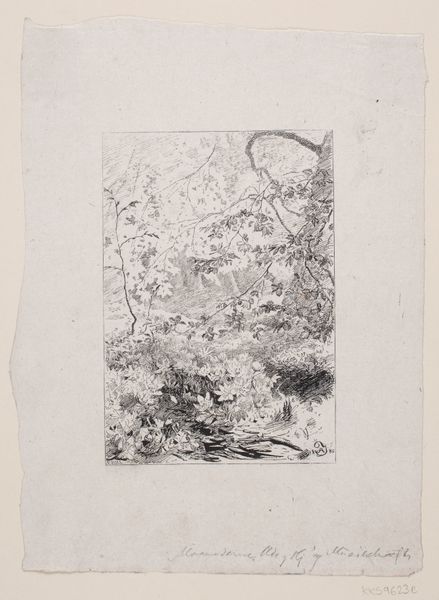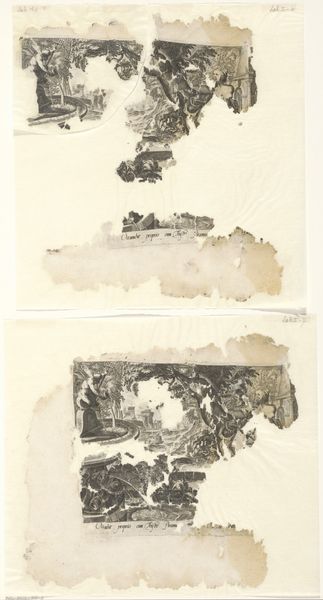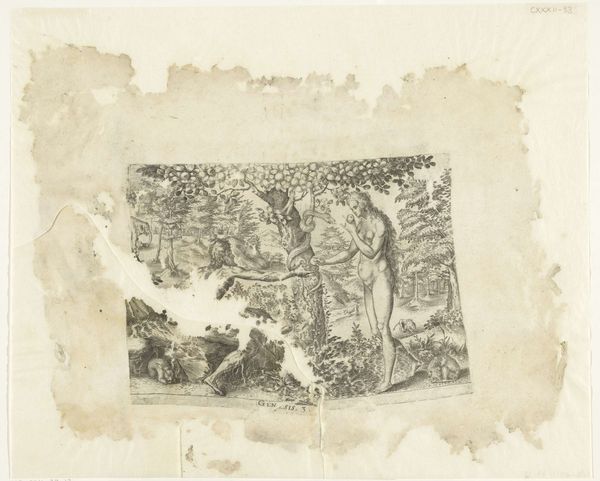
Rechteronderhoek van een prent van het tafereel van Cebes 1561 - 1596
0:00
0:00
drawing, print, paper, engraving
#
drawing
#
narrative-art
# print
#
paper
#
11_renaissance
#
history-painting
#
northern-renaissance
#
engraving
Dimensions: height 307 mm, width 380 mm
Copyright: Rijks Museum: Open Domain
This is a fragment of a print of the ‘Tafereel van Cebes’ made by Philips Galle, around the late 16th century, now at the Rijksmuseum. The subdued monochrome palette and the damaged edges of the paper accentuate a sense of a lost world. The composition is split into two main fragments, each densely populated with figures and architectural elements, creating a labyrinthine visual space. The use of hatching and cross-hatching in the engraving technique builds depth and volume, defining the forms of the characters and structures. The figures are rendered with careful attention to anatomy and drapery, yet their arrangement seems to defy conventional perspective, resulting in a flattened, almost dreamlike quality. This disruption of spatial logic can be seen as a deliberate strategy. The print invites us to question fixed meanings, and to engage with the complexities inherent in the human condition. The incompleteness of the fragment underscores the transient nature of knowledge and the limitations of representation, reminding us that art is a continuous process of interpretation rather than a static entity.
Comments
No comments
Be the first to comment and join the conversation on the ultimate creative platform.

